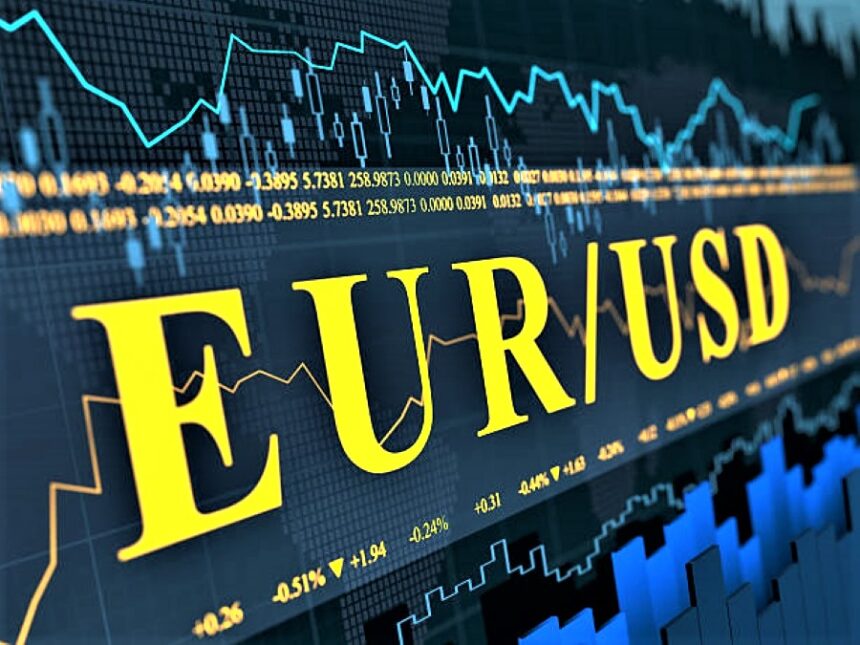EURUSD jumps above 1.0850.
EURUSD rises above 1.0850 in Monday’s European session. Following a quiet start to the week ahead of the release of inflation data on both sides of the Atlantic on Friday. The major currency pair strengthens as European Central Bank (ECB) policymakers avoid committing to continuing the rate-cut cycle past the June meeting.
The Euro gains as investors remain concerned about the ECB cutting interest rates in July as well.
ECB policymakers do not want to pledge more rate drops because they appear concerned. That aggressive policy easing could Reevaluate price pressures.In this context, traders have reduced their expectations for three rate cuts this year to two, owing to recent economic indicators indicating persistent price pressures. Such as the first-quarter Negotiated Wage Rates and the preliminary HCOB Composite Purchasing Managers Index (PMI) for May.
Higher pay growth widens households’ wallets, resulting in a large increase in consumer expenditure. Which feeds inflationary pressures. However, ECB board member and Bundesbank President Joachim Nagel downplayed the impact of greater wage growth. Claiming that it is a trailing indication and that the long-term trend is projected to be soft.
On the economic front, German IFO data on Business Climate, Current Assessment. And Expectations for May were issued. The Overall, statistics underperformed expectations; yet, the Euro remained steady.
The German IFO Business Climate Index fell marginally to 89.3, from 89.4 in April. Investors expected a significant increase to 90.3.The Current Economic Assessment Index fell to 88.3 from 88.9 in April, below the consensus of 89.9.The IFO Expectations Index, which measures firms’ expectations for the next six months, was 90.4. Falling short of the market forecast of 90.5 but still better than the previous reading of 89.7.
Daily Market movers: EURUSD gains while US Dollar falls.
The EURUSD rises above 1.0850 in a low-volume trading session due to the Memorial Day holiday in the United States. This week, volatility is predicted to be significant since the Eurostat is established. to release preliminary May inflation statistics, and the US Bureau of Economic Analysis (BEA) will report the core Personal Consumption Expenditure Price Index (PCE) data for April. Both reports will be issued on Friday.
Investors will be closely watching Eurozone inflation statistics, as ECB policymakers are largely expected to announce a rate drop at their monetary policy meeting in June, barring any surprises. ECB officials are still satisfied with market expectations for a return to policy normalization in June, but many are hesitant to commit to any additional moves and prefer to remain data-dependent.
The expectations for the Eurozone preliminary inflation report imply that the yearly core reading—which strips off volatile categories including food, energy, tobacco, and alcohol—will remain stable.
at 2.7%. The headline figure is expected to have risen to 2.5% from 2.4% in April. Inflation data is unlikely to have a big impact on June’s rate decrease decision.
Meanwhile, the US dollar falls in the early European session, continuing the severe sell-off from Friday. The US Dollar Index (DXY) slipped to 104.60. Despite investors losing faith in the Federal Reserve’s (Fed) decision to begin cutting interest rates at its September meeting.
The CME FedWatch tool indicates. That traders expect the central bank to hold interest rates steady in September, up from 38% last week. The likelihood of keeping rates on hold have been boosted by a fairly good preliminary US PMI report for May.
Investors expect the Fed to begin decreasing borrowing rates in the fourth quarter of this year.
This week’s core The PCE inflation statistics will influence market expectations for Fed rate decreases in September. The Consumer pricing Index (CPI) data for April. Which was released earlier this month, revealed that pricing pressures had eased following a hot first quarter. This slowdown implies that the core PCE, the Fed’s preferred inflation metric, will have eased from its previous reading of 2.7% year on year.









